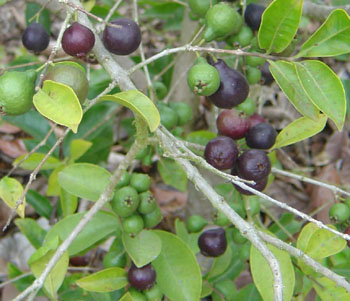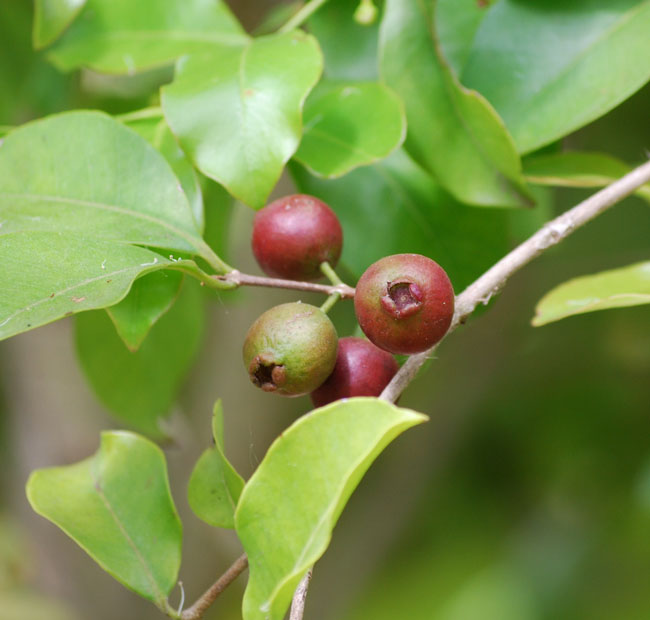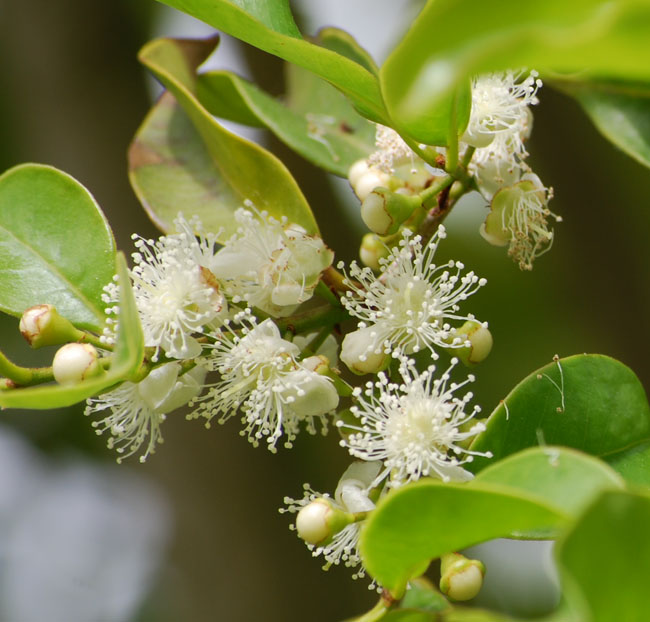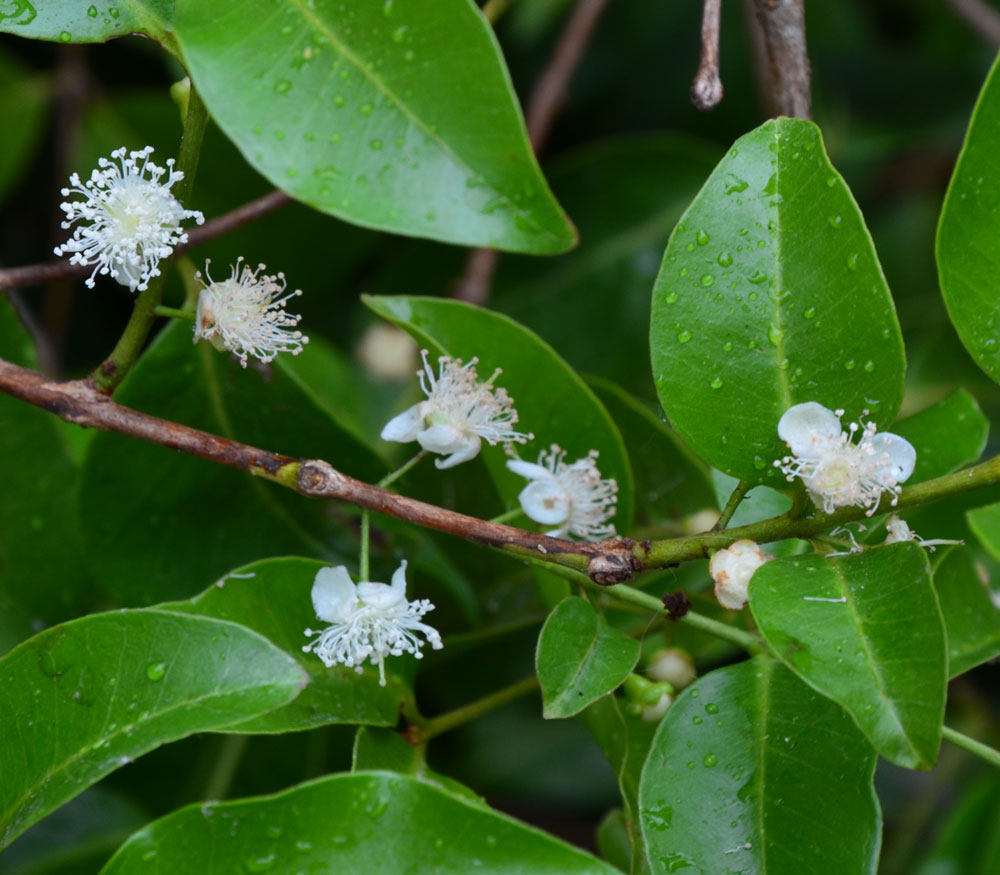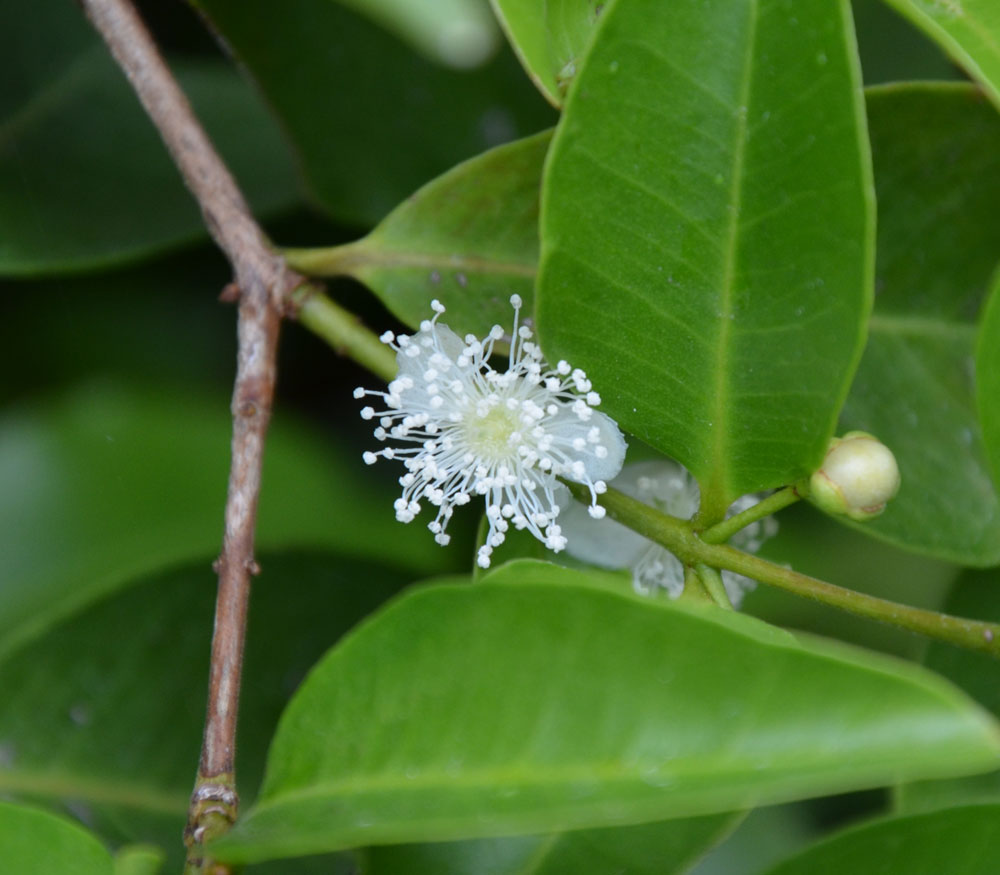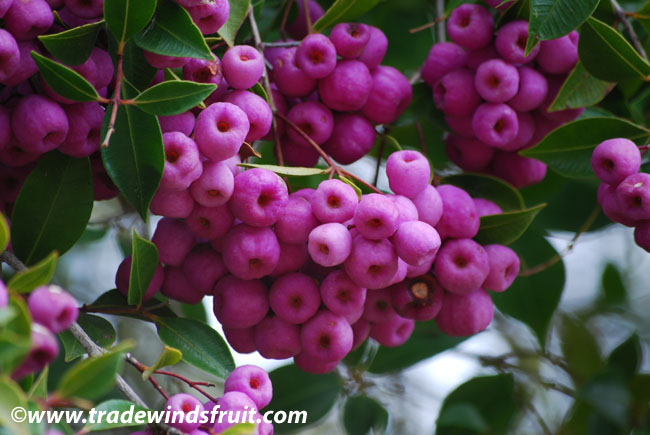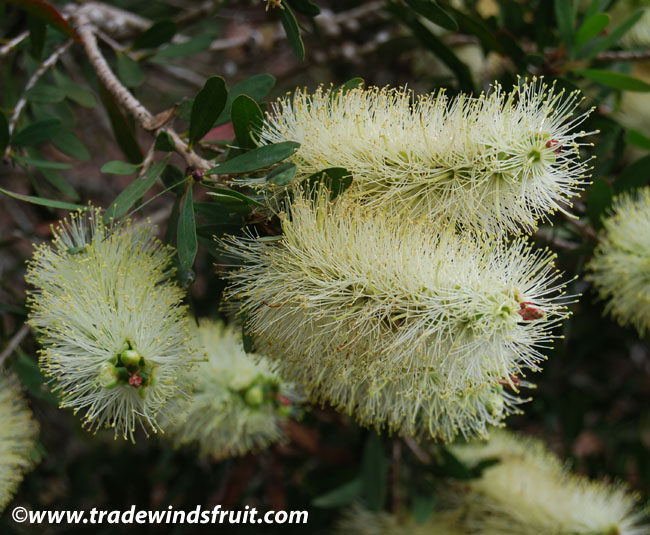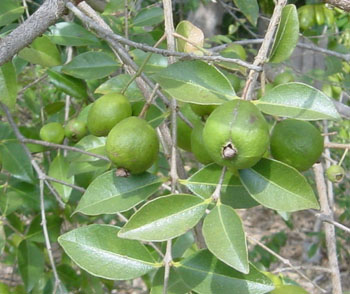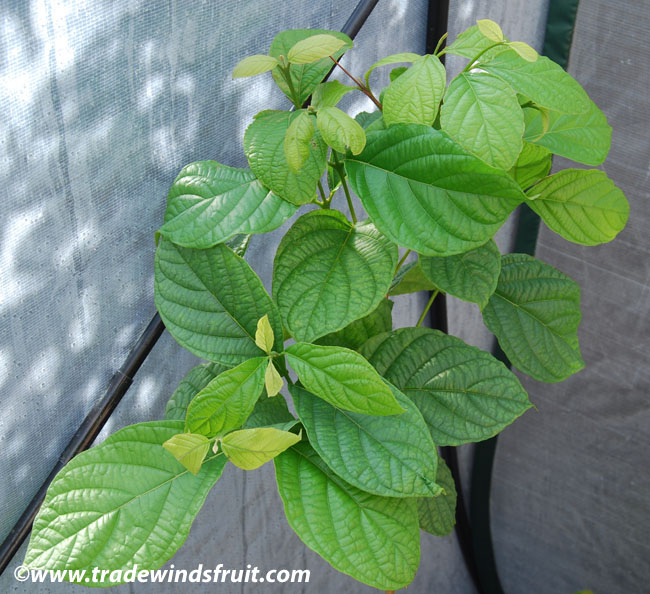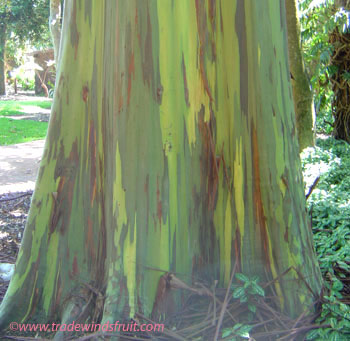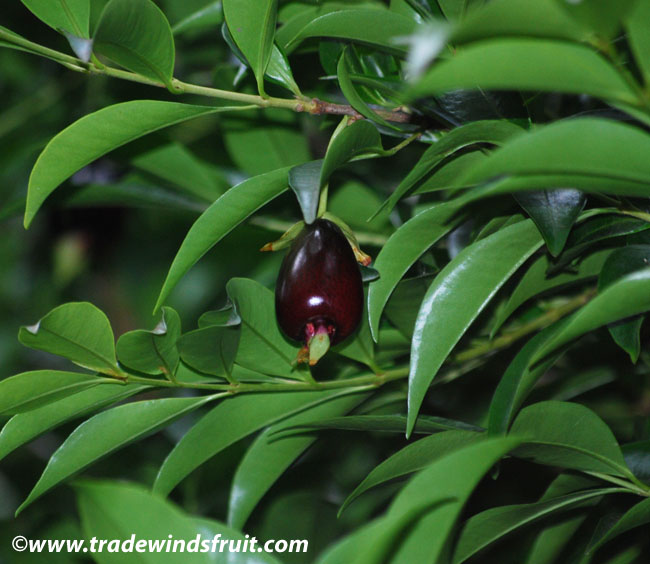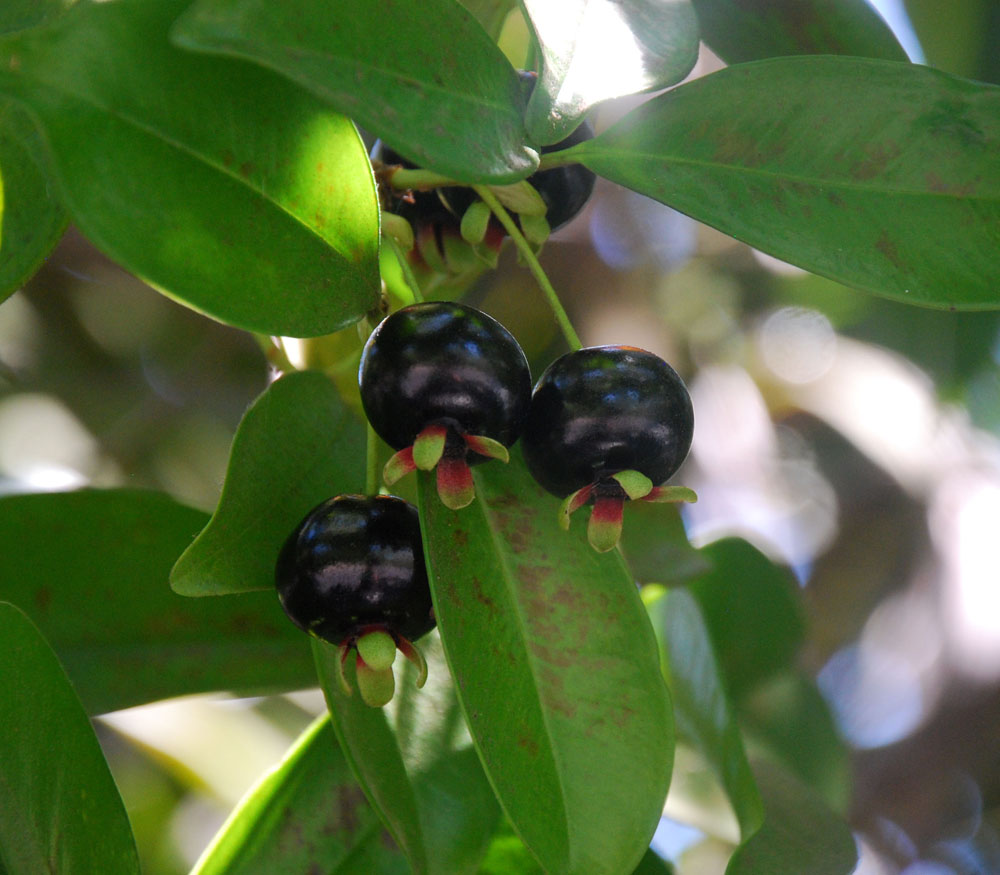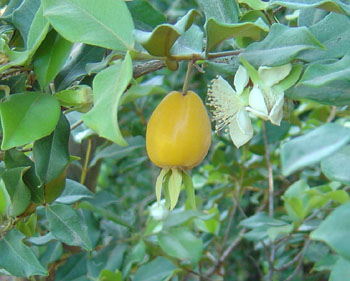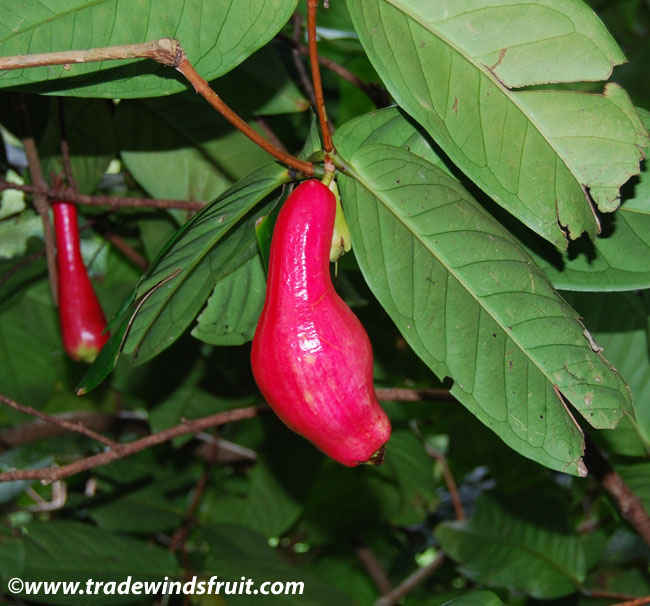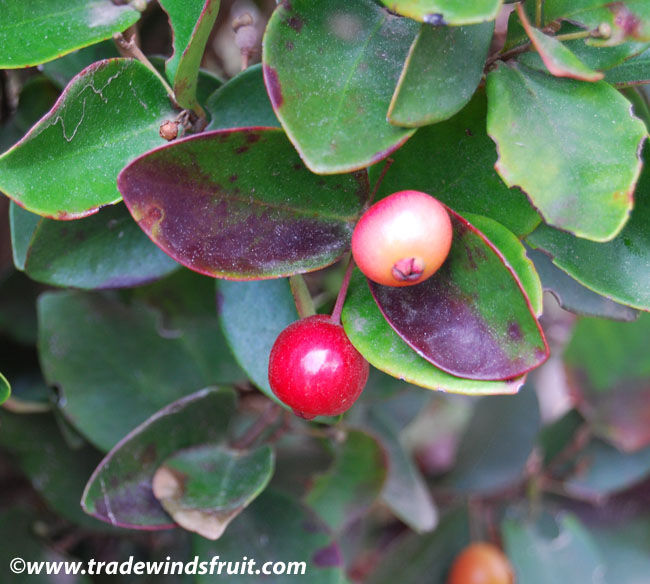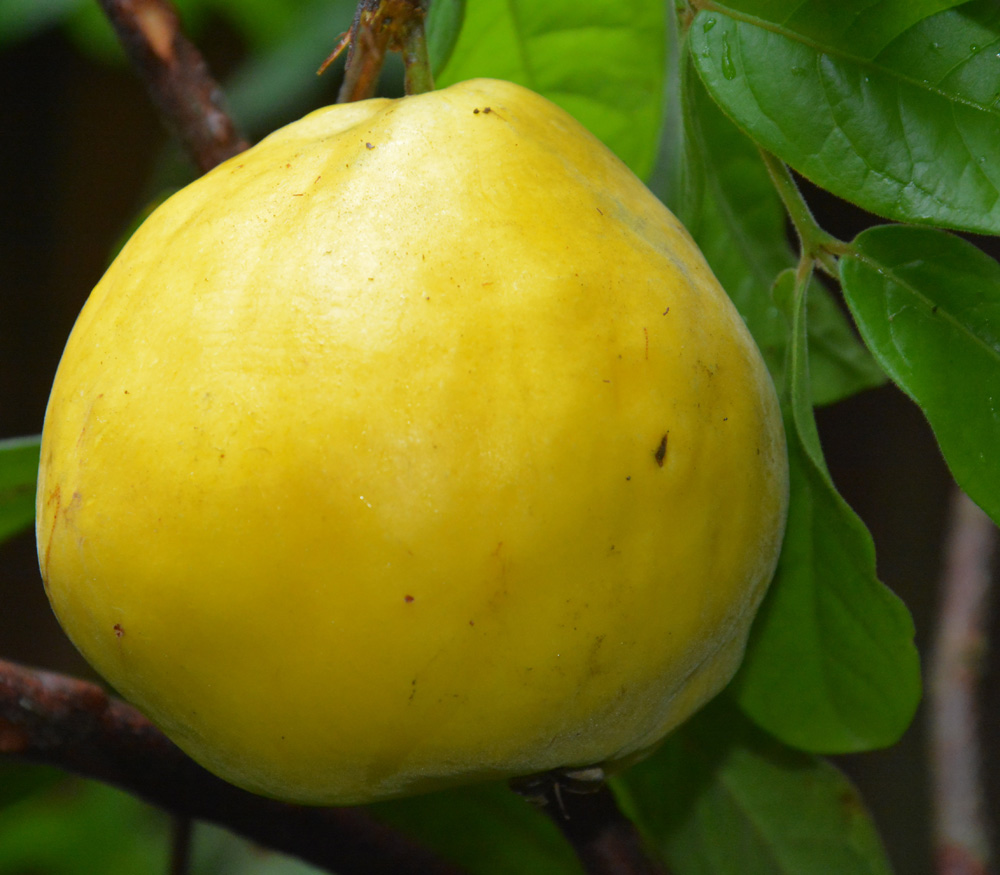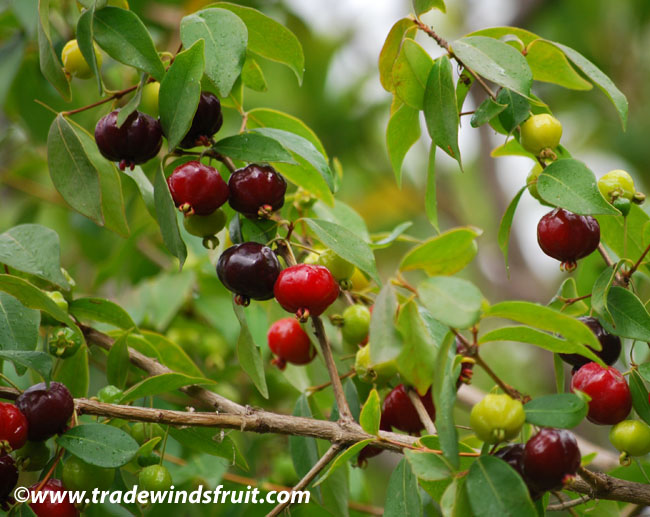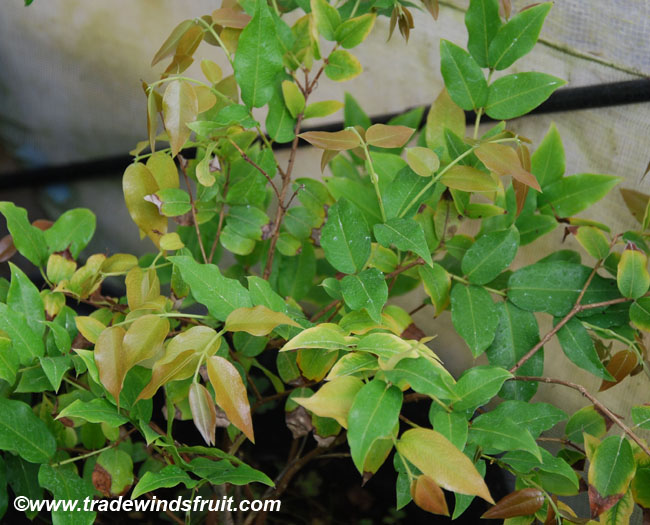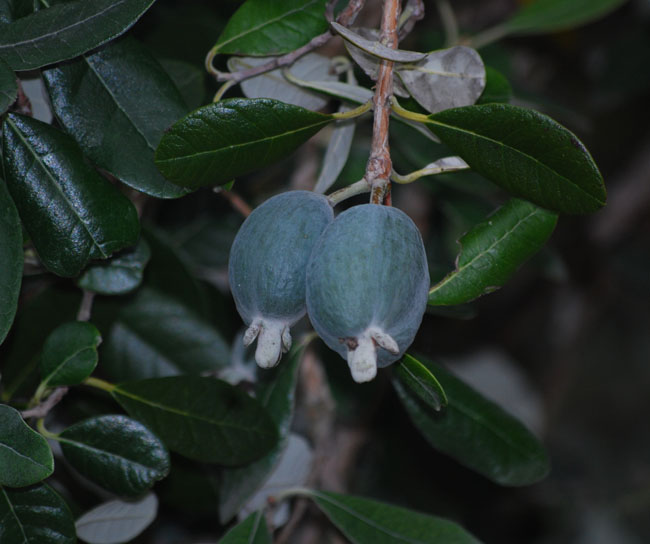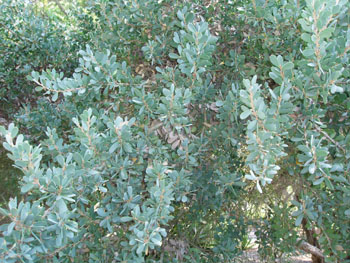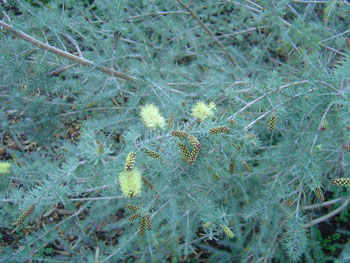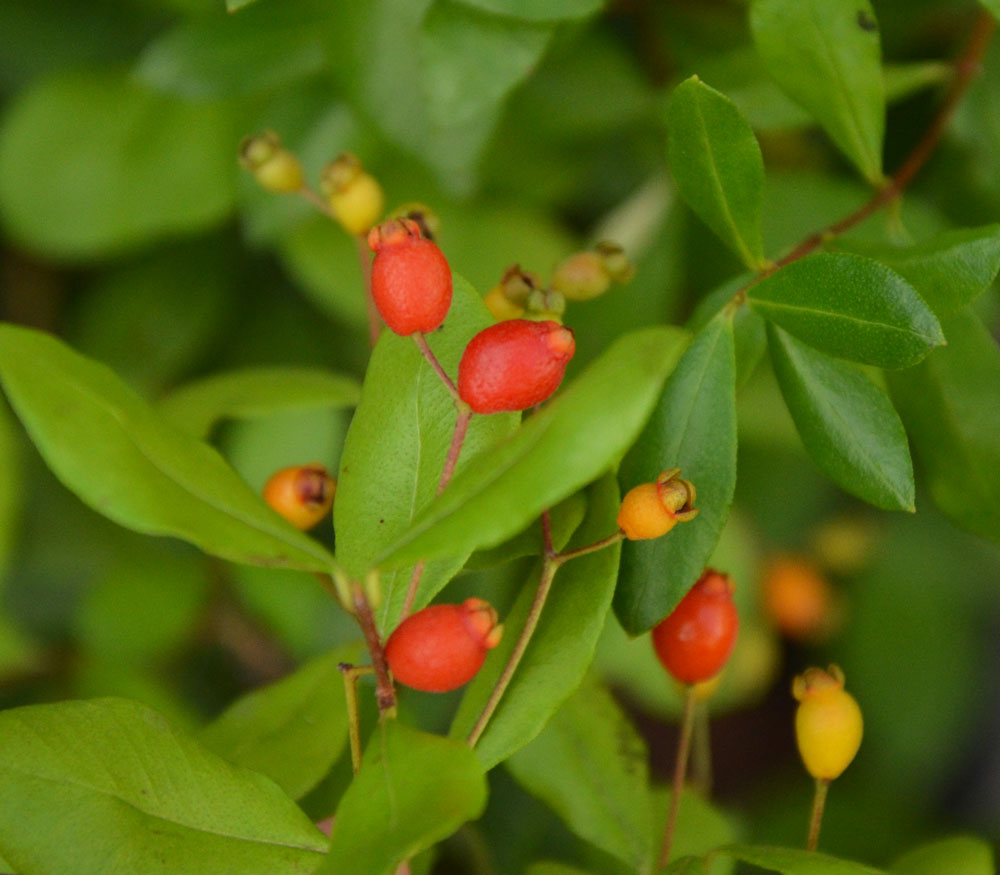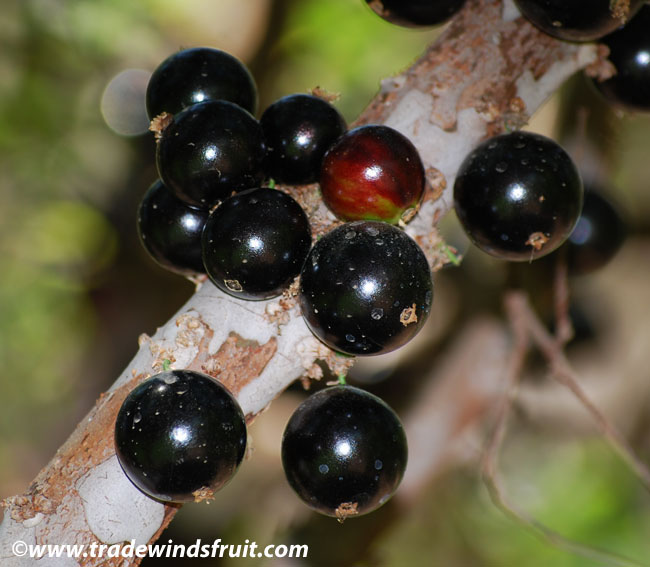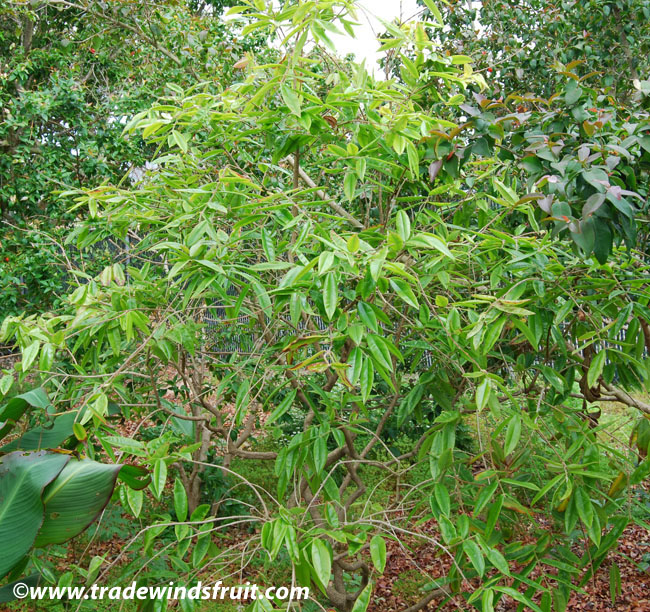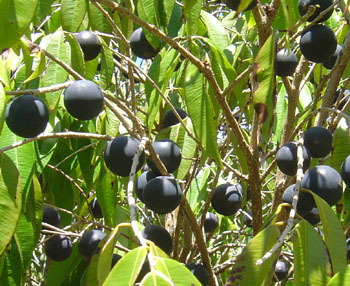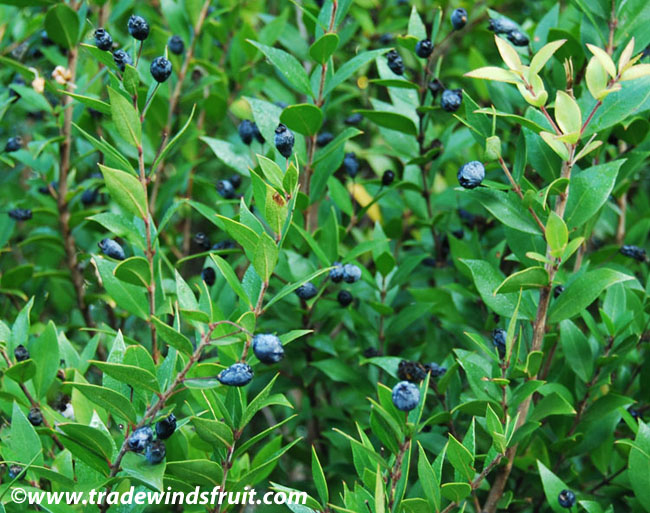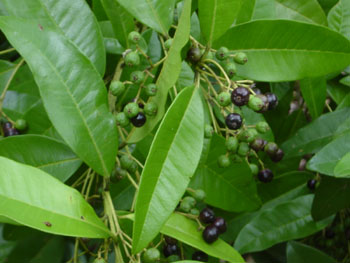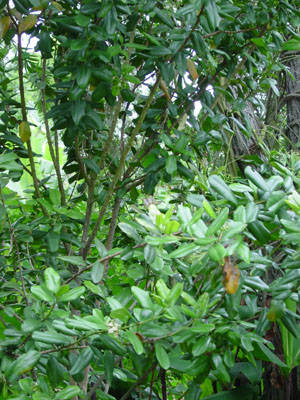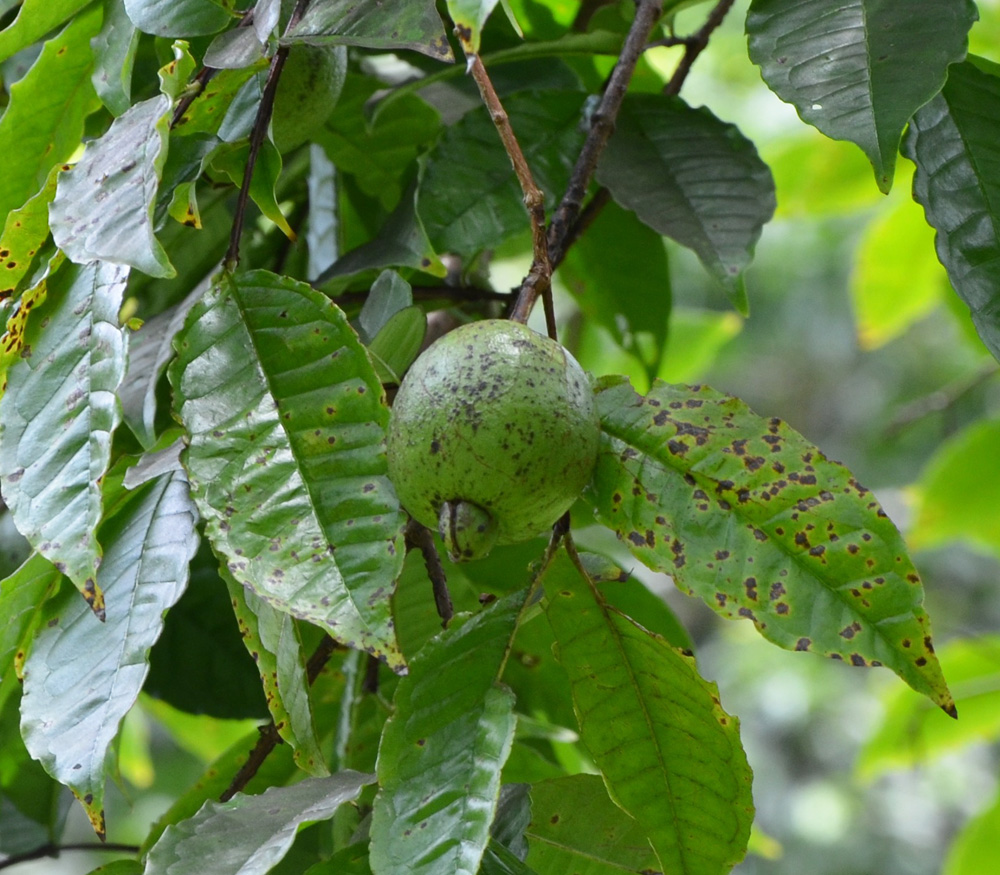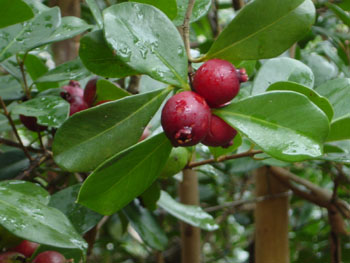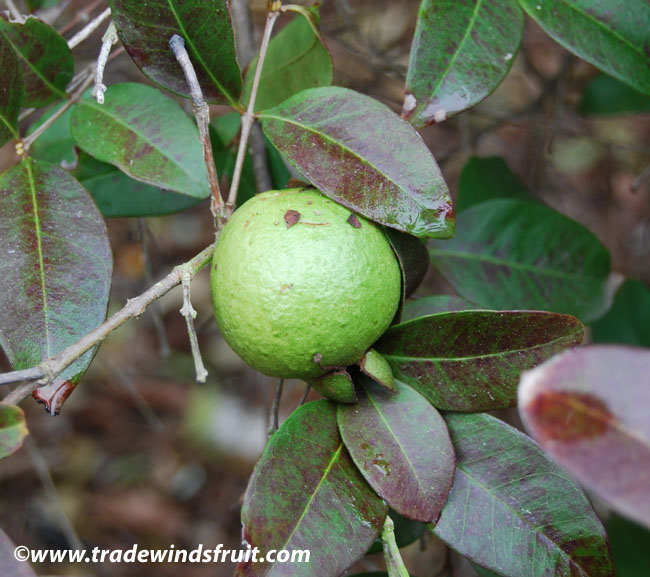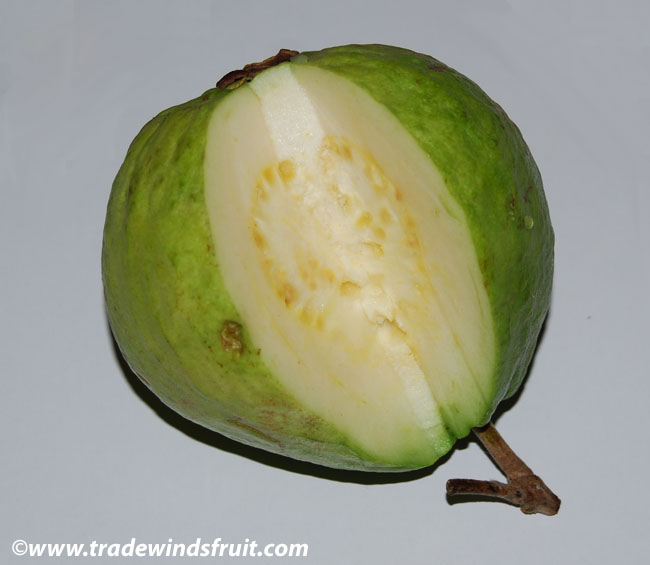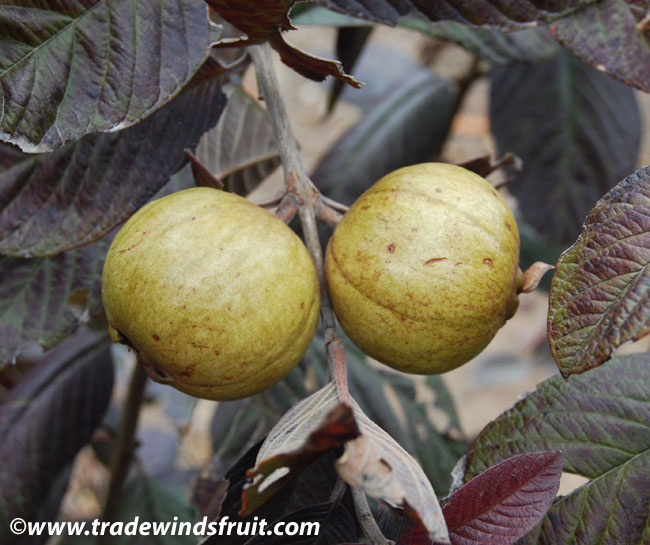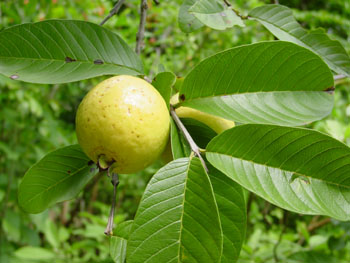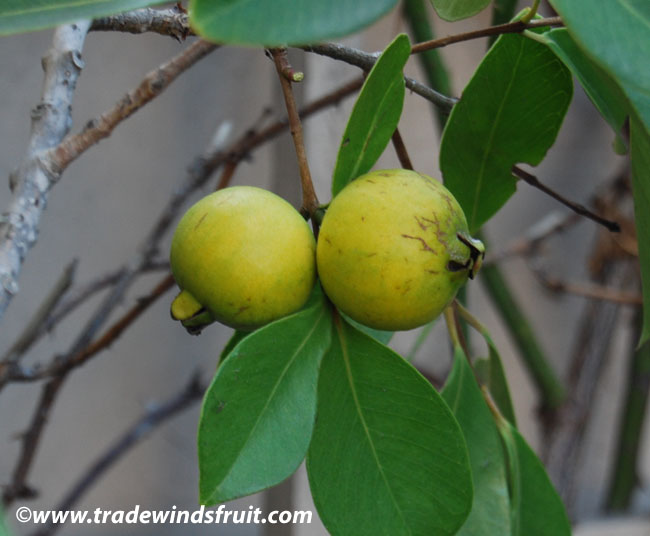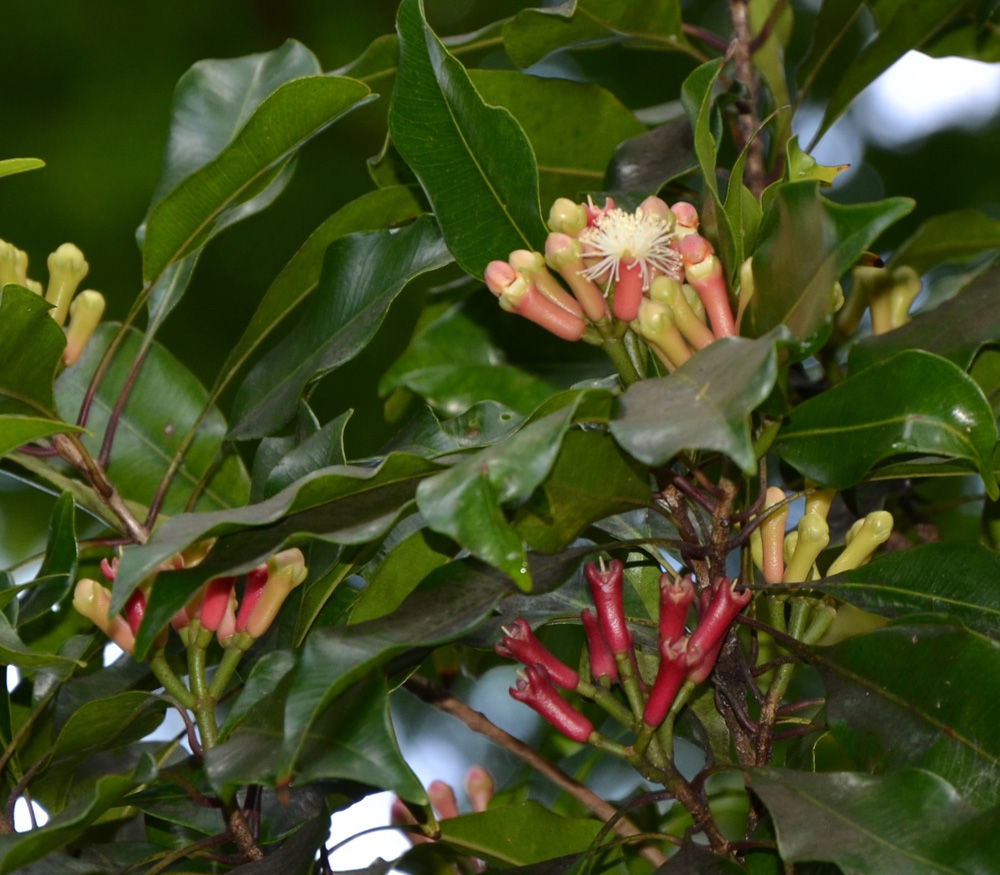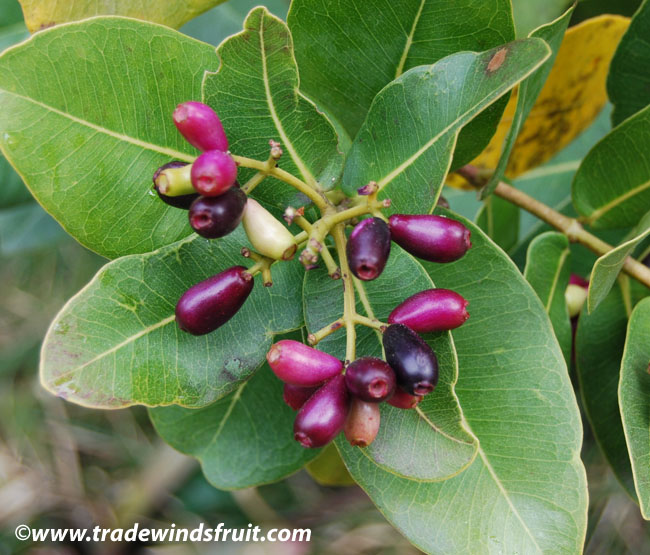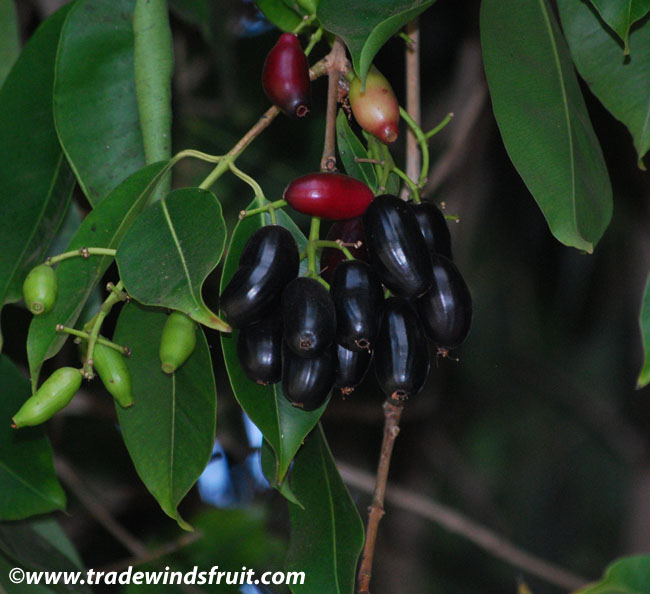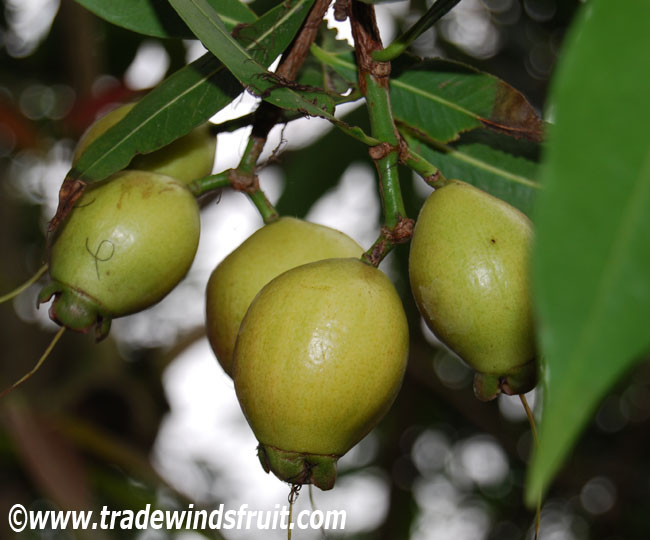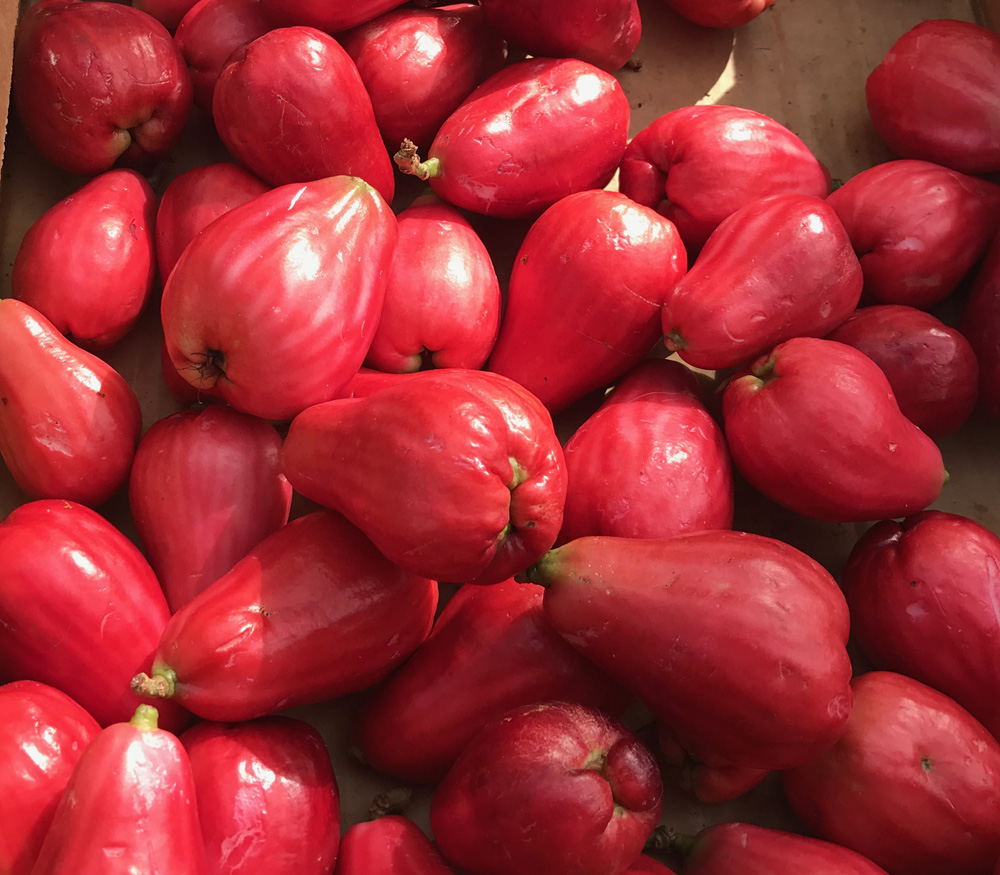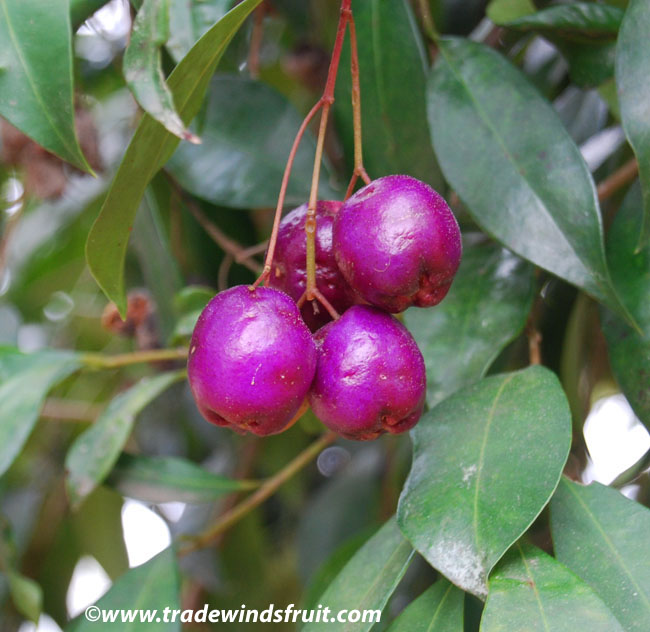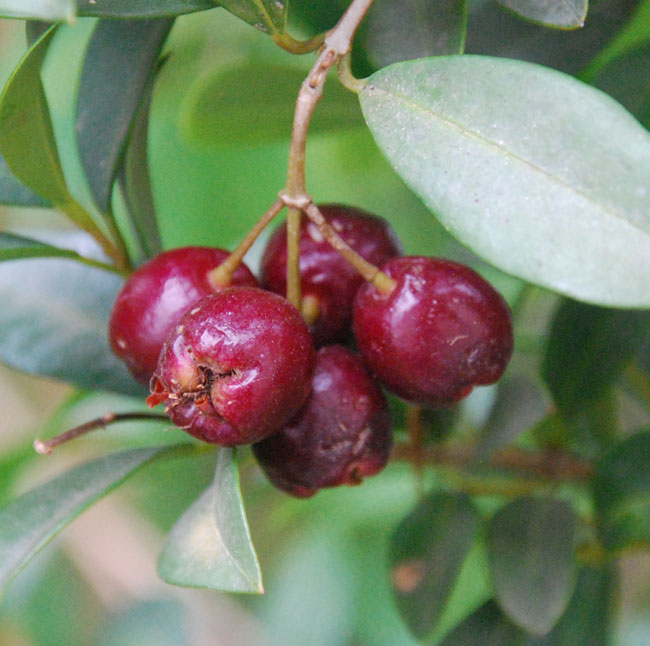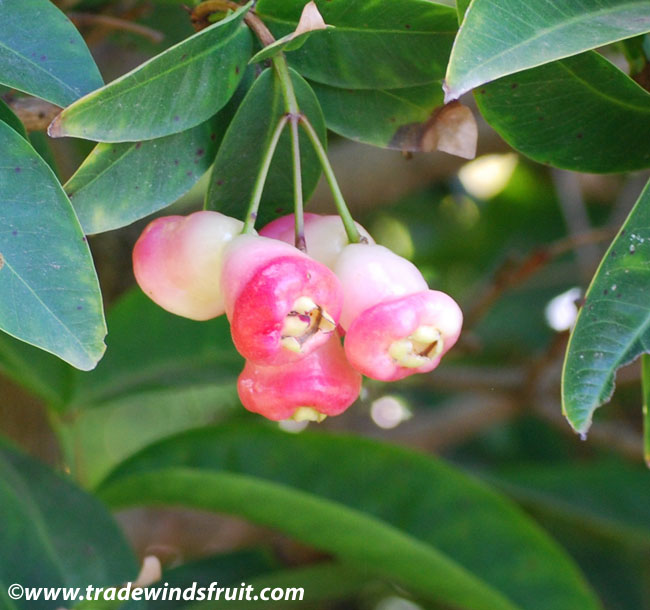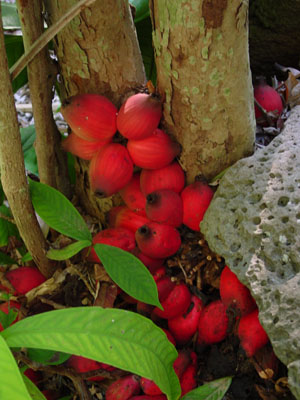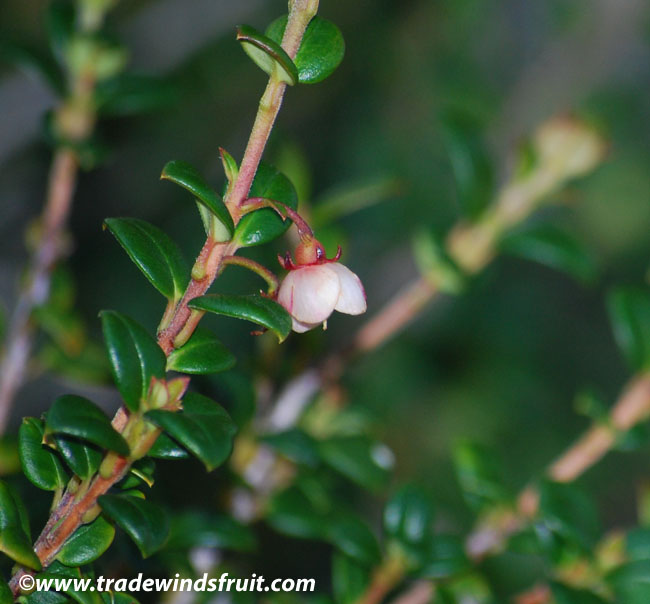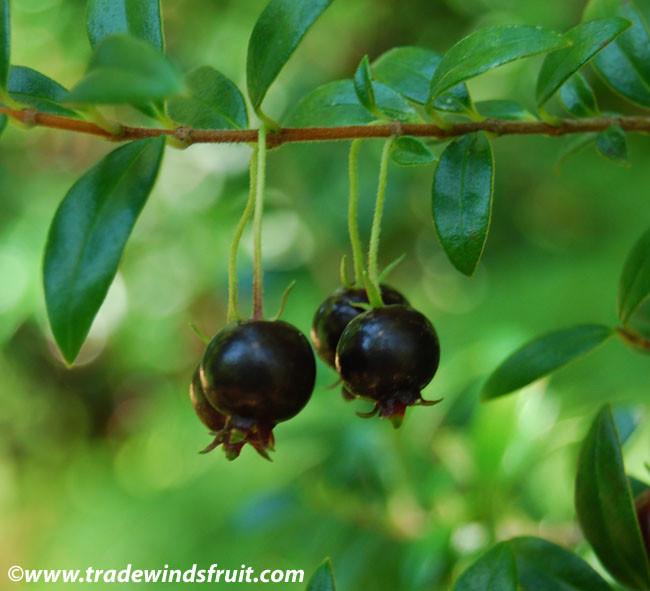- Home »
- Information »
- Purple Forest Guava
Purple Forest Guava
Psidium eugeniaefolia
An interesting guava relative from the Atlantic rainforest of Brazil. Bears small, dark red to purple colored fruits, similar in size to the Strawberry Guava.
Seed Availability
Seeds are now available at our seed store.
Description
A bushy shrub growing to 6-12 feet. Glossy leaves, with some similarities to the strawberry guava. From seed, flowering has occurred after three years. Fruits ripen several weeks later. Some sources have listed this species as part of the Marlieria genus. When seeds were previously offered we listed the species this way as well. Recent identification would indicate placement in the Psidium genus and the plant bears considerable similarities to other Psidium's.
Hardiness
The species shows some surprising frost tolerance. While not as tolerant as the strawberry guava, we have had some mature plants survive 28F with no damage. Temperatures below 28F caused leaf burn and presumably a degree or two colder would be lethal to the plant.
Growing Environment
The species would appear to do well in similar conditions as the strawberry guava. Water with some regularity, though mature plants showed some tolerance to drier conditions. Likely not too picky about soil type, so long as soil is well drained. Grow in filtered sun to full sun. Protect from freezes and sustained temperatures above 100F.
Propagation
By seeds. Fresh seeds take from 1-2 months to germinate.
Uses
The fruits have an acidic flavor which in our experience, can be variable. Some specimens produce fairly tasty fruits with an acidic bite. In other specimens, the fruits can have bitter overtones. Seasonal climate also would appear to play a role in flavor quality as well. Presumably the fruits could be used for flavoring and though small, could likely be eaten fresh as well. Some sources claim this species has similarities to the camu-camu with regards to its nutritional benefits. We are not aware of a breakdown of the chemical components of the fruit, but due to its coloration, familial links and overall flavor, the fruits could have high antioxidants like the camu-camu.
Native Range
Native to the Atlantic rainforest region of Brazil.

